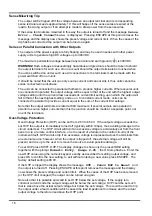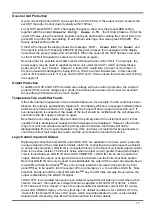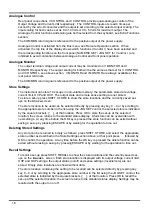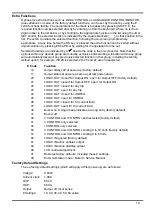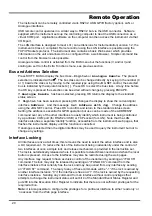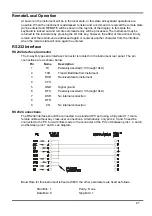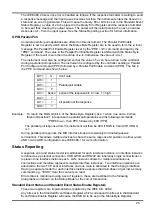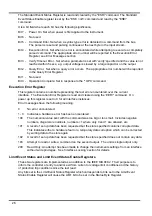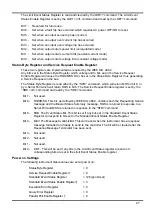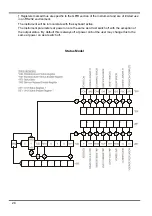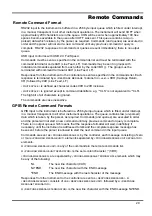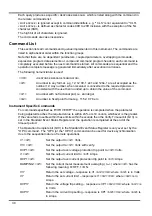
Sense Miswiring Trip
The output will be tripped off if the voltage between an output terminal and its corresponding
sense terminal exceeds approximately 1V; this will happen if the sense wires are wired at the
load to the wrong output or if an attempt is made to draw power from the sense wires.
If the sense terminals are miswired in this way the output is turned off and the message
Sense
Error – Check Connections
is displayed. Pressing ESCAPE at this point removes the
message and the display now shows the preset voltage and current limit. When the cause of the
trip has been corrected the output can be turned on again.
Series or Parallel Connection with Other Outputs
The outputs of the power supply are fully floating and may be used in series with other power
supply units to generate high DC voltages up to 300VDC.
The maximum permissible voltage between any terminal and earth ground (
) is 300VDC.
WARNING!
Such voltages are exceedingly hazardous and great care should be taken to shield
the output terminals for such use. On no account should the output terminals be touched when
the unit is switched on under such use. All connections to the terminals must be made with the
power switched off on all units.
It should be noted that the unit can only source current and cannot sink it, thus units cannot be
series connected in anti-phase.
The unit can be connected in parallel with others to produce higher currents. Where several units
are connected in parallel, the output voltage will be equal to that of the unit with the highest output
voltage setting until the current drawn exceeds its current limit setting, upon which the output will
fall to that of the next highest setting, and so on. In constant current mode, units can be
connected in parallel to provide a current equal to the sum of the current limit settings.
Note that the output terminals are rated at 60A maximum; if several outputs are operated in
parallel to source higher currents than this the junction should be made at a separate point, not
one of the terminals.
Over-Voltage Protection
Over-Voltage Protection (OVP) can be set from 2·0V to 65.0V. If the output voltage exceeds the
set OVP the output is immediately turned off (typically within 100µs), thus avoiding damage to the
circuit under test. The OVP circuit will trip if an excessive voltage is accidentally set from the front
panel or via a remote control interface, or is the result of a failure in the control circuitry of the
instrument itself. OVP will also trip if an excessive voltage is impressed across the terminals from
an external source; however, when the output is tripped off, the external voltage will still be
present and it is up to the user to remove the source to avoid possible damage.
To set OVP press SHIFT, OVP. The display changes to show only the present
OVP
setting
together with the prompt
Numeric Entry: Range 2-65
; the OK lamp flashes. Enter the
new OVP value using the numeric keypad, exactly as described for setting output voltage, and
press OK to confirm the new setting; to exit without entering a new value press ESCAPE. The
factory default setting is 65·0V.
If the OVP is tripped the display shows the message
OVP - Press ESC to Reset
and
the output is turned off. Pressing ESCAPE at this point removes the message and the display
now shows the preset voltage and current limit. When the cause of the OVP has been removed
(or the OVP limit changed) the output can be turned on again.
Note also that it is possible and valid to set OVP below the set voltage. If the supply is in
constant current mode the output voltage will be below the set voltage; OVP could be set such
that is was above the actual output voltage but below the set voltage. This could be used to trip
the output under a fault condition which caused the load impedance to increase and the actual
output voltage to therefore rise above the OVP point.
16















